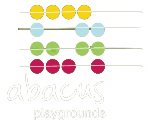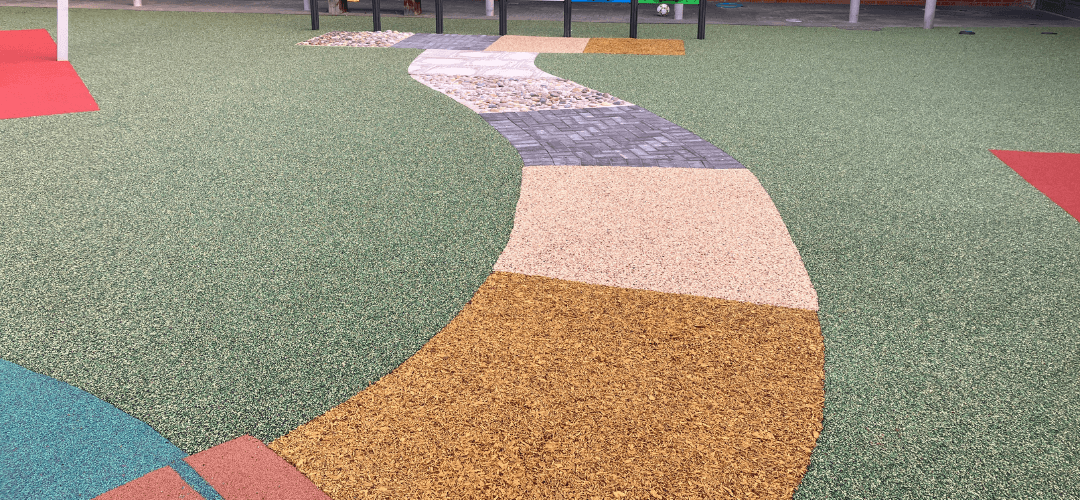Paths are more than simple walkways. In schools, parks, housing developments, and community spaces, they connect people to facilities, shape how outdoor spaces are used, and influence how attractive and accessible an area feels. Choosing the right surfacing for paths is not just a practical decision. It is also about creating environments that are safe, inclusive, and built to last.
Surfacing for paths is about more than creating walkways. The right material improves safety, accessibility, and durability while enhancing the look of schools, parks, and community spaces. Options such as resin-bound gravel, wetpour, artificial grass, and rubber mulch provide practical and attractive solutions for public pathways.
For councils, architects, and developers, surfacing for paths requires careful consideration. Different materials offer different advantages in terms of appearance, durability, maintenance, and cost. This guide explores the main options, highlights the benefits of investing in quality path surfacing, and explains how the right choice balances practicality with design.
Why Path Surfacing Matters
At first glance, path surfacing can seem like a small detail compared with larger landscaping or construction projects. In reality, it plays a vital role in how a space works.
- Accessibility: Smooth, level paths allow everyone to move freely, from wheelchair users to parents with pushchairs.
- Safety: Slip-resistant materials reduce risks in wet weather. Good drainage prevents puddles and ice from forming.
- Durability: Well-surfaced paths withstand constant use and changing seasons, avoiding costly repairs.
- Aesthetics: Paths contribute to the overall design of a space. They can blend into natural settings or stand out as decorative features.
For public parks and schools in particular, paths are used daily. Poor surfacing quickly becomes a source of complaints, while high-quality materials improve the experience for all users.
Popular Surfacing Options for Paths
There is no single solution for all pathways. The best material depends on the setting, budget, and design goals. Here are the most commonly used options that Abacus Playgrounds installs across schools, councils, and community spaces.
Resin Bound Gravel
Resin-bound gravel is one of the most versatile and popular choices for modern path surfacing. It is created by mixing natural or coloured aggregates with a clear resin, which is then laid to form a smooth, durable surface.
Benefits:
- Attractive finish: Available in a wide range of colours and textures, from natural stone looks to more contemporary styles.
- Durability: Resistant to wear, weather, and heavy footfall.
- Low maintenance: Easy to clean and resistant to weeds.
- Permeability: Allows water to drain through, reducing puddles and improving safety.
Resin-bound gravel is ideal for public parks, school grounds, housing estates, and even golf courses. It creates an elegant yet hard-wearing surface that can handle constant use.
Wetpour Rubber
Wetpour Surfacing is best known as a playground surfacing material, but it can also be used for accessible pathways around play areas, splash parks, and schools.
Benefits:
- Safety: Slip-resistant and impact absorbing, making it suitable for areas used by young children.
- Colourful designs: Can be installed in different colours and shapes, linking paths to themed playgrounds.
- Inclusivity: Smooth surface supports wheelchairs and pushchairs.
Wetpour paths are particularly useful in spaces designed for children, where safety and inclusivity are top priorities.
Artificial Grass with Path Edging
Artificial grass can be used to create informal paths, often alongside play or landscaped areas. When combined with a stabilised base and edging, it provides a green, natural look.
Benefits:
- Aesthetics: Looks soft and welcoming.
- Clean and low maintenance: No mud, mowing, or watering required.
- Comfortable underfoot: Works well in areas for younger children.
While artificial grass paths are less common in heavy-use public areas, they are effective in schools and visitor attractions where a natural appearance is desired.
Rubber Mulch
Rubber mulch is more often used beneath play equipment, but can also be laid in natural-style paths through woodland or green spaces.
Benefits:
- Natural appearance: Looks like bark or wood chip, but does not scatter.
- Durability: Withstands weather and foot traffic better than loose-fill bark.
- Drainage: Porous surface prevents puddles.
It is best suited to rural or nature-themed settings where blending with the environment is important.
How Surfacing for Paths Supports Public Spaces
Schools
In schools, paths guide children safely between buildings, playgrounds, and sports fields. Surfaces need to be durable enough for daily use, easy to clean, and safe in all weather. Resin-bound gravel is particularly effective, while wetpour may be used for accessible routes within younger play areas.
Parks and Community Spaces
For councils, paths are a defining feature of public parks. They must be wide, accessible, and safe, while also complementing the landscape. Resin-bound gravel provides an attractive, low-maintenance solution. In natural parks, rubber mulch can create woodland trails that are both practical and aesthetically sympathetic.
Housing Developments
Developers rely on well-designed paths to connect homes with communal spaces. Resin-bound gravel is popular for its durability and kerb appeal. It creates a sense of quality while reducing long-term maintenance costs for residents.
Golf Courses and Visitor Attractions
Paths in golf courses and attractions often need to carry heavier footfall and equipment such as buggies. Resin-bound gravel’s durability and drainage make it a strong choice, while its natural appearance blends into landscaped surroundings.
Blending Practicality and Design
One of the biggest challenges for path surfacing is achieving the right balance between functionality and design. Paths must be safe, practical, and long-lasting, but they also need to enhance the space they serve.
- Practicality: Smooth finishes for accessibility, slip resistance for safety, and permeability for drainage.
- Design: Colours and textures that suit the wider environment. Resin-bound gravel, for example, can be matched to building finishes or natural landscapes.
- Integration: Paths should link seamlessly with play areas, seating zones, gardens, or entrances, creating a cohesive environment.
By considering both aspects together, councils and developers can create paths that are not only useful but also attractive and welcoming.
The Long-Term Value of Quality Path Surfacing
Investing in high-quality surfacing may seem costly at first, but it provides significant savings over time.
- Fewer repairs: Durable materials such as resin-bound gravel last for many years without major upkeep.
- Lower maintenance: Surfaces that resist weeds, puddles, and cracking reduce labour costs.
- Better safety record: Slip-resistant, well-drained paths reduce accidents and potential liability.
- Increased appeal: Attractive public spaces encourage more visitors and higher satisfaction from residents.
The long-term cost of choosing the wrong surfacing often outweighs any short-term savings. Poorly laid or low-quality paths wear quickly, create hazards, and require frequent replacement.
Frequently Asked Questions
What is the best surfacing for paths in public spaces?
Resin-bound gravel is often considered the best all-round option. It is durable, attractive, permeable, and suitable for a wide range of public settings.
Can different surfacing types be combined?
Yes. Many projects use resin-bound gravel for main routes, wetpour for play areas, and mulch for natural trails. Combining materials can balance cost, function, and design.
How long does resin-bound gravel last?
With professional installation and routine care, resin-bound gravel paths can last more than 15 years.
Is wetpour suitable for pathways?
Wetpour can be used for accessible paths, especially in playgrounds and splash parks. Its slip resistance and smooth finish make it ideal for children and mobility users.
What maintenance is required for path surfacing?
Most surfaces need periodic cleaning to remove dirt and debris. Resin-bound gravel and mulch are largely low maintenance, while wetpour may require occasional inspections and minor repairs.
Paths are the framework that holds public spaces together. They guide movement, ensure accessibility, and set the tone for how areas are experienced. The right surfacing choice blends practicality with design, creating routes that are safe, durable, and attractive.
From resin-bound gravel in parks and housing developments to wetpour pathways in schools and play areas, there are solutions for every type of space. By investing in high-quality materials and professional installation, councils, developers, and schools can deliver pathways that enhance their environments for decades.
Abacus Playgrounds provides expert advice, a wide range of surfacing options, and nationwide installation. Whether you are planning a new housing development, improving school grounds, or upgrading public parks, our team can help you choose surfacing for paths that combines safety, durability, and design.
Looking to create better pathways in your project? Contact Abacus Playgrounds today to discuss your surfacing options.

